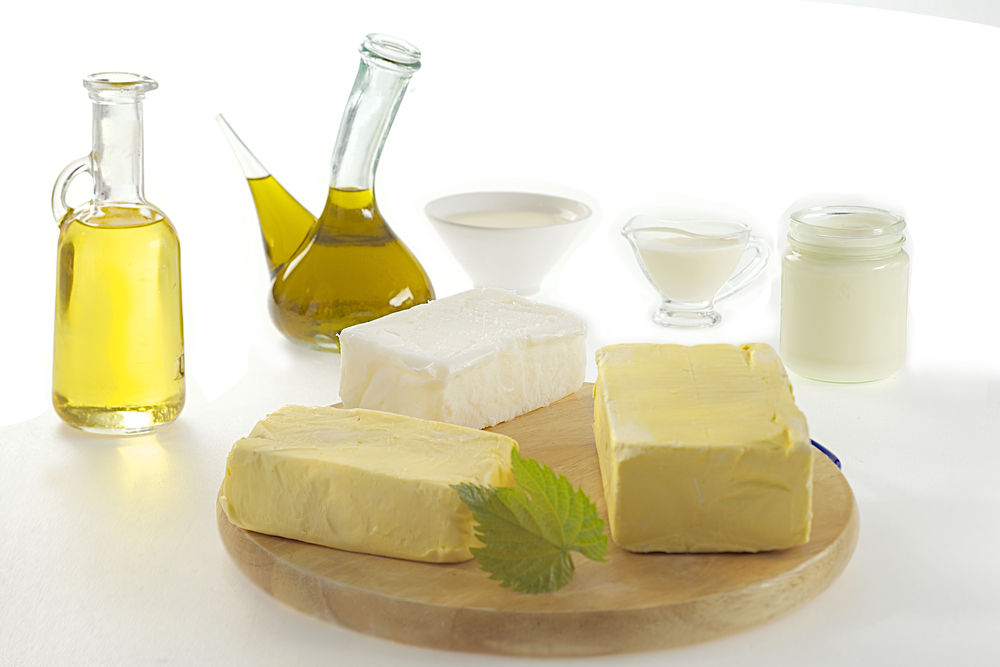Three seemingly random disparate points of observations merged into one coherent thought in my mind the other day. The first observation was from a 4-part Amazon Prime documentary series titled “Tribes”. The second observation was a sentence that stopped me in my tracks:
In the 1950s Arild Hansen showed that in humans, infants fed skimmed milk developed the essential fatty acid deficiency. It was characterized by an increased food intake, poor growth, and a scaly dermatitis (Wikipedia).
I bumped into this as part of my research during the third observation, which was my discovery that monounsaturated fatty acids, such as olive and avocado oil, as much as we are told how important and healthy they are for us to eat, are neither essential, nor particularly healthy.
These three seemingly independent points connect at a very important aspect of our life: what food is important and/or essential for us humans to eat, what and how did our ancestors eat, and the puzzling sentence about how babies experience two of the most common modern diseases: overeating and scaly dermatitis. And we know that these diseases also afflict a large percent of the adult population.
I start by reviewing the four documentaries I watched, then discuss the fatty acids, and conclude with the babies.
Tribes and Milk
The documentary visited four currently existing naïve tribes still living in their ancestral ways on their ancestral lands today, retaining as much of their traditional culture as possible. Each tribe is in Africa, near or in Kenya. These are Pokot (Children of the Nile in Bogoria), El Molo (Phantoms of the Lake), Turkana (Vampires of the Desert), and Rendille (Shadow Hunters).
Of these four tribes, none practices agriculture. They are nomadic or semi nomadic and three out of the four herd their own animals, including goats and cattle, and one tribe also herds camels. None of the tribes is permitted to hunt, except the El Molo is allowed to fish and if they catch a crocodile, they can eat it. The El Molo don’t herd.
Of these four tribes, I have only seen the Pokot tribe consume any carbohydrates (cornflour cooked with water) but consumed only by the women and only one night, when the circumcision of the 15-year old boy takes place and women that night are not permitted to eat meat. None of the other tribes consumed any plants, fruits, vegetables, nuts, under any other circumstances—although they did make herbal concoctions for the sick to consume.
Of the four tribes, the El Molo live in a place next to a salt-water lake where nothing grows, so their staples are fish and the occasional crocodile. They do some trading with herding tribes, so there was one scene in which dried fish was exchanged for milk.
The herding tribes live exclusively off of meat, blood, and milk. In fact, their daily staple is milk. They only eat meat when they slaughter their own animals, which typically occurs at times of celebration. They also drink blood by letting the animals bleed without killing them, taking only as much blood as they need to take for sustenance.
Why Milk?
Milk is a most nutritious food: this is why babies suckle. Milk contain all essential nutrients, vitamins, and minerals. Babies that nurse real mothers’ milk grow fast, are “chubby” healthy, and receive plenty of protection against various diseases.
The energy cost for human brain growth, which reaches 70% of all the energy the mother ploughs into her fetus during the brain growth spurt, is guaranteed by fat stores unique to humans amongst the primates.
If you ask, most modern doctors will tell you that milk is not healthy. Most people you ask will tell you that drinking milk as an adult is unnatural and that it doesn’t ever exist past infanthood. The list of anti-milk tirades is endless. And this seems to be true: the majority of people are said to be lactose intolerant as they grow into adulthood. According to statistics, 65-70% of adults are lactose intolerant. So it was fascinating for me to watch these four tribes, in which all members, from newborn to the very old, lived off of milk.
It is easy to accept that the tolerance for lactose reduces once someone stopped drinking mother’s milk, because keeping some enzymes ready to work when there is no need for them, is an inefficient allocation of energy that could be spent elsewhere in the body. But what if the lactose intolerance lies somewhere else? Such as in the cow milk protein variant A1 – associated with a mutated cow gene – which often causes gases, bloating, and other discomfort associated with lactose intolerance. The milk the tribes consume only contain A2 milk protein that does not trigger any discomfort in humans. Maybe the secret of lactose intolerance be simply the intolerance of the A1 protein?
Essential Versus Important
Genomic research has explained that DHA is responsible for transcribing over 170 genes required in brain development.
Before I jump into expanding on the subject of the essential nutrients in milk, and why whole milk—in particular—is of the highest essence, I need to cover the confusing meaning of “essential” when we discuss nutrients. In everyday parlance “essential” means “we must have it or else”, but when it comes to nutrition we have been bombarded with all kinds of confusing messages. For example, we have been told that eating whole grains is essential and eating meat is not essential. Yet, over the history of human evolution, the consumption of grains only appeared as a staple in the last, approximately, twelve-thousand years, when humans started to develop agricultural practices—while the consumption of meat had been the staple for millions of years. So not only is it illogical, but it is absolutely incorrect to suggest that something humans have evolved on and that has helped them become who they are today, is not only not essential, but is harmful.
The true meaning of something that is “essential” in nutrition, is that “you must eat it because the body cannot create it”. That is all. Let me elaborate on this with a couple of examples. When the body finds something extremely important for survival, evolutionary processes have ensured us the ability of being able to make it ourselves. So, for example, cholesterol and saturated fatty acids are so essential, that the human body has created and retained the ability to make these come rain or shine, no matter what we eat.
Basically, the ability that humans can make cholesterol and saturated fatty acids allowed humans to survive on an otherwise nutritionally weak grain diet. Although grains have plenty of nutrients in them, these nutrients aren’t available to humans by our digestive processes. Human digestive processes are perfect for eating animal products but are incapable of digesting plant fiber. Yet whatever nutrients are in the plants, they are in the fiber.
The human body is also extremely efficient and unnecessary functions are removed. Thus, nutrients that humans have always had access to in their diet, such as omega 6 and omega 3 (polyunsaturated) fatty acids, our body does not create and we must consume them—albeit in a very small amount. According to the NIH, the daily recommended allowance (RDA) of omega 3 fatty acid (O3) is 1.1-1.6 gr for adults—age and gender variable. Omega 6 fatty acid RDA (O6) is 11-17 gr a day, also age and gender variable. However, there is no agreement on the ratio of O6 to O3 fatty acid. While the RDA appears to suggest a ratio of over 10:1, many experts disagree and recommend anywhere between 1:1 to 4:1. Hence we don’t have a consensus on how much of either of these essential fatty acids we must consume, though we all agree that it is minimal.
What we do know is that animal fatty acids, particularly from grass fed and well-cared for animals, contain ample amounts of O6 and O3. Plants on the other hand don’t contain much O3 fatty acids, and whatever little amount they do contain is in a precursor (ALA) form, which cannot be used by humans without conversion. Humans are unable to convert ALA O3 to DHA, the animal form, efficiently. Studies show that the rate of ALA conversion to DHA is between 0%-4% in young men and up to 9% in young women. With age, this conversion rate further decreases.
Only one type of O6 and one type of O3 fatty acid is essential. In O6 we must consume Linoleic Acid and in O3 fatty acid we have a choice of three alternatives: ALA (plant form, precursor to DHA, discussed in the previous paragraph), EPA (animal form, precursor to DHA), or DHA (animal final form). So the animal form of O3 is the clear winner—animal form is found in fish in large amount, and to some degree in all animal meat, egg, and milk—particularly in organic milk.
Milk As a Nutritious Food
If you ask me about milk as food, I will tell you that milk is a super-food, rich in essential fatty and amino acids (proteins), low in carbohydrates, and a rich source of electrolytes, vitamins, and minerals; I call milk the “perfect meal”. I often have just milk (sometimes a bit of cream added) as a whole meal.
Finding information on the milk types these tribes drank is not easy in any Western database.
The data in the table below on camel milk was averaged between the many camel types listed. For goat, cow whole and skim milk the data was taken from the USDA database.
| Milk (100 gr) | Camel | Mature Human | Cow Whole | Goat Whole |
| Fat | 3.83 | 4.38 | 3.25 | 4.14 |
| Protein | 3.64 | 1.03 | 3.15 | 3.56 |
| Carbs (lactose) | 4.68 | 6.89 | 4.8 | 4.45 |
While this table doesn’t show O6:O3 ratio, it does show that milk from farm animals is an excellent source of nutrients and is quite similar in nutrient content to mature human milk. Note also that mature human milk contain more fat than any other milk listed in the table. Fat is healthy and it allows newborn babies their fast brain development. Since the brain is mostly fat and cholesterol, drinking high-fat milk with high cholesterol is great source of nutrients for human babies.
Some Milk Problems
With all the good things I have noted about milk, it can also have downsides. Some babies are lactose intolerant—they are also unable to nurse as a result. Obviously, in cases like this, milk needs to be substituted with an appropriate and nutritionally equivalent fluid.
Some babies—as well as adults—complain about getting a stuffed up feeling in their head, sinus pressure, perhaps phlegm building up. These are reactions to the mutated milk protein in cow milk. Human milk, camel, and goat all contain the ancient A2 milk protein, but most cows around the Westernized world today produce milk that contains a mutant A1 protein as well, so their milk protein profile is A1/A2. Milk cartons/bottles are usually stamped with A1/A2 so you can tell what you are buying.
Should you find that you cannot tolerate this mutant protein, try milk that contains only A2 milk protein. To this date, all goat milk is still A2, and they are readily available everywhere. In addition, all Guernsey and some Jersey cows produce A2 protein milk. There is also a brand called A2, which only carries A2 milk.
Raw milk contains much more nutrients than pasteurized milk, but they come with health risks and also they are not legal in every state. Look around and consider trying A2 protein milk, and enjoy the healthy dose of fatty acids you receive.
We Need Your Help
More people than ever are reading Hormones Matter, a testament to the need for independent voices in health and medicine. We are not funded and accept limited advertising. Unlike many health sites, we don’t force you to purchase a subscription. We believe health information should be open to all. If you read Hormones Matter, like it, please help support it. Contribute now.
Yes, I would like to support Hormones Matter.
The article was published originally on September 21, 2020.











Hi Angela, Milk is such a fascinating topic, isnt it! I am wondering though, can we reccomend people drink non-A2 milk at all, as A1 milk, aka regular commercially available milk is known to contain BCM7 that not only affects the gut but also readily crosses blood brain barrier and causes all sorts of effects, esp cheese and dairy addiction! (spoken as self-confessed addict). I have transitioned fully to A2 milk, luckily it is readily available in Australia, but the majority of dairy products like cheese/yogurts are made of regular milk… A1 milk consumption is linked to high prevalence of type 1 diabetes, esp in Scandinavian countries (admittedly they are probably low on D too) but as T1 is now more often developing in adults and not just children… isnt it a bit risky? I guess depends on exposure level… WHats your stance on regular commercial A1 milk products in general? Ok for most? Thank you.
Dear IrinA,
This is a great question, thank you. And my thinking is as follows: A1 protein emerged at about 10K years ago, hence modern humans are more used to drinking milk and eating other dairy, including cheese, butter, cream, sour cream, cream cheese, mascarpone, ricotta cheese, cottage cheese, farmer cheese, etc., from milk that is a combination of A1 and A2 milk. The A1 variant contains betacasomorphin-7 (BCM-7) and most milk sold today is a mix of A1 and A2, with some brands, including the A2 Brand and several other brands that vary by location, now promoting their exclusively A2 milk, which has no BCM-7.
Since A1/A2 milk is the ubiquitous dairy around the world, we should still recommend it. Not all humans are susceptible for BCM-7–for example, I am not. I have been drinking standard milk (A1/A2) all my life and just recently started drinking A2 simply because it is available to me and I know it’s better for me. But the cheeses, butter, cream, etc., those are still A1/A2 for the most part and there is no reason for me to reduce my consumption. I am not sensitive.
Since most people are not sensitive to BCM-7, we have no need to restrict the milk recommendation to just A2.
Rather, I recommend that those who are BCM-7 sensitive and feel that they get addicted if they eat dairy, they should focus on drinking A2 milk only and eating only A2 dairy products if available to them, or eat no dairy products at all. It should only be those who have the genetics for addiction to BCM-7.
There are studies that counter the papers you are referring to about the creation of type 1 diabetes (T1D) associated with A1 milk protein. T1D is on an increasing slope, similarly to type 2 diabetes, whereas A1 protein milk has been consumed for 10K years, so clearly that’s not the culprit. There are several reasons why one may end up with T1D: genetic, viral (this has been suggested but such virus has not yet been found), childhood (more on this is a sec), and, of course, adult onset as a result of having had type 2 diabetes (T2D) and the insulin production of the pancreas has ceased.
Returning to the childhood T1D, which is on a steep incline of incident count: why that may be? The answer is likely a lot simpler than most think. When the mom-to-be eats a lot of carbs and her insulin is not sensitive enough, the fetus’ pancreas must remove the excess glucose from the fetus’ blood–thereby also the mother’s blood. In other words: the pancreas of the yet undeveloped child, the fetus, is doing all the work for itself as well as for the mother. By the time that fetus develops into a baby and is born, the pancreas is often compromised. This gives rise to early childhood T1D. It really has nothing to do with the milk but everything to do with irresponsible amount of carbohydrates consumed by the mom-to-be and then the child after birth, especially with rice cereals in baby formulas. Pure starch (sugar) diet. There is also genetics to blame, alas that would not be a changing rate over time.
I hope my answer makes sense to you.
Best wishes,
Angela
I actually have another (other that than A1/A2 and lactose) hypothesis why dairy is problematic: it’s content of SCFAs (https://www.researchgate.net/figure/Fatty-acid-composition-of-bovine-caprine-and-ovine-milk-fat_tbl1_267923695). MCT oil causes diarrhea and there are some studies (https://twitter.com/drpaulmason/status/1157942489853988864) showing that it is making gut leaky. Same could be happening with high-fat dairy containing relatively high amounts of SCFAs – I saw one study showing that high-enough SCFA concentrations are actually detrimental to gut lining (same as MCTs are, I cannot locate it now :(). If it is the case than having undigested milk proteins (no matter on the A type) leaking through the gut could be causing issues. The only exception would be human mother’s milk (which actually contain some MCFAs, mainly C12, but no SCFAs https://www.researchgate.net/figure/Total-fatty-acid-composition-of-mature-human-milk_tbl2_8984075) which should not trigger any inflammation as it has probably same DNA code behind as child’s one (unless father messed things up a bit :)). I am testing now whether no-fat lactose-free dairy is making any difference to me using skin rashes as a marker.
Dear Chris,
Human milk is full of saturated fat! “Milk lipids of European women today typically contain some 35-40% saturated fatty acids, 45-50% monounsaturated fatty acids, and approximately 15% PUFA“. Also, the very link you provided to the human fatty acid composition shows the largest percent of fatty acids in humans are saturated fatty acids. I think you misunderstood the table and/or don’t know how to distinguish fatty acid types.
Leaky gut is a problem of people eating grains and it has nothing to do with milk or other foods. It is an autoimmune response to indigestible toxins found in grains. So rather than switching to fat free or low fat milk–a highly processed food with only glucose–I recommend you stop eating grains and start eating a normal human diet, which is full of animal protein, animal fat—yes, saturated fat–and seafood, fish, eggs, poultry, and organs.
There is no need to reinvent human evolution, we know precisely how humans evolved and what made us who we are today. And non-fat or reduced fat milk has never ever been a part of that evolution. So rather than moving backwards, move forward and eat what is healthy for human–what has been healthy for humans for eons: full fat milk.
Cheers,
Angela
I am not aiming saturated status (as in SFA – saturated FA where I totally agree it is superior to MUFA/PUFA) but chain length – SC – short chain and MC medium chain lengths… Please reread my post
Chris chain length has some importance but the long-chain saturated fatty acids are more important than the short or medium-chain. And that’s because the amount needed is different. Cellular integrity is coming from the long-chain saturated fatty acid. The short-chain forms come from gut flora and used by the gut itself and the medium chain comes from coconuts but it is important to note: both are created in ketosis. Both short and medium-chain fatty acids are some form of butyrates.
While our body always creates ketones (beta-hydroxybutyrate) at a baseline level, when one reduces carbohydrates in the diet, one actually creates beta-hydroxybutyrate as the primary fuel for the body. So there is zero need to eat MCT, for example, since your body makes it all day long. And the 12-chain is created by your gut flora all day long.
It is important to understand that in nature all fat groups contain 3 fat types, meaning if you look at olive oil or tallow or pork lard, or soy oil, all will have MONO, PUFA, and SFA. So whatever you eat, you will be eating all three all the time.
By the way, you wrote this: “The only exception would be human mother’s milk (which actually contain some MCFAs, mainly C12, but no SCFAs… I am testing now whether no-fat lactose-free” and this was completely incorrect. My response was to this.
Cheers,
Angela
In my family, multiple members suffered from terrible migraine since teenhood.
It was only later on in life they learned the connection to simply not eating enough calories was causing them.
They were not underfed by any means – what constitutes enough is a lot more than what people think.
All those decades – what they needed was to simply up their calories… protein, carbs, fat.
Dear L,
Not eating enough Calories doesn’t cause migraines; it causes malnutrition and likely headaches as a result.
Migraine is a genetic condition, which sets up an extreme sensitivity to carbohydrates and a need for much higher sodium content of the electrolyte than typical. The outcome of this sensitivity is that if you stop consuming carbohydrates and increase salt and water, you can prevent migraines. Migraine is directly caused by an electrolyte imbalance as a result of the over-activity of the sensory neurons. In a migraineur’s brain, the sensory neurons have much more connections than the same neurons in a typical non-migraine brain. This is why migraineurs tend to be overstimulated by strong bright lights, strong odors, loud sounds, more sensitive to touch, and some are super-tasters. More connections mean more “chatter” and so a healthy myelin (myelin is insulation for electricity conduction) system is essential.
Because of the hyper-reaction of the brain to sensory stimulus, it generates more voltage. Voltage is communication in the brain and that extra voltage uses more sodium. Migraineurs need more salt in their diet to counter this effect. Migraineurs are also glucose sensitive (carbs intolerant) because glucose removes sodium and water from cells—therefore, carbs reduce sodium even more, causing a migraine.
To learn more about real migraines, read my book and join my Facebook migraine group.
Best wishes,
Angela
Not malnutrition – literally, they skip a meal for x reason = migraine.
No long-winded explanation needed.
Carbs is usually what gets rid of the migraines in my fam.
Also, so much for all these theories regarding milk intolerance: I am one of those babies that couldn’t do milk. Lo and behold after 40+ years – I drink straight from the container now. I did as I do with a new substance: start low and star slow. A sip here and sliwly ibcreased to a cup. Etc.
Dear L,
I am not sure you actually read my article since your response is quite off the topic. I was considering to not even respond but I decided I should, since other readers may be misled by your comment. I am a migraine expert and have several articles on the cause of migraine, which is electrolyte imbalance via genetic glucose intolerance of the migraineur. I teach migraine to doctors, so you may want to read my very short summary here to learn what migraine is.
If you are medically inclined person, you may want to watch the 2-part interview in which an MD, PhD is interviewing me about migraine. You can find part 1 here and part 2 here. If you are not medically inclined, you will find a layman’s interview here.
Enjoy learning what migraine really is. It sounds like your family either gets headaches rather than migraines, or if carbs help, then you are getting sugar crashes.
Best wishes,
Angela
I think in good conscience you can ONLY recommend raw milk and its products (cheese, etc)–pasturized, homogenized milk from cows that have been given antibiotics and growth hormones is poison–
Shaye,
No one is recommending you eat poison. There are organic milk options that are from cows without hormones. So enjoy that kind. This article just suggested that milk is healthy for us. What kind of milk you drink is your judgment.
Angela
Interesting. Our family tried raw milk for a few years and my thyroid became much more inflammed; already high antibodies shot up even higher. We made our own cheese, ice cream by scraping off the cream layer. Stopped it, added missing dietary nutrients and TPO went back to normal within a year. Tried recently adding goat cheese back in and a former weakness in my back came back; a precursor to my back going out (not happened in years since stopping dairy). Quit it again and back is not acting up again. Still trying to figure it out. Think it has something to do with Vitamin k2. Perhaps when the gut is fully healed it will produce enough k2 to conduct the movement of calcium properly. I don’t know, but we sure miss it.
Dear HO,
Milk has quite a bit of iodine in it–everything cows eat (on a healthy field) contains iodine. If you have Hashimoto’s disease, or any other autoimmune diseases, iodine can play tricks with you and if you take medicines for your thyroid, the affect of iodine in food can cause even greater chaos. It is important to look at food for all its values (or lack thereof) before you decide to eat them. In addition, it may be worthy to evaluate the true cause of your TPO increase, which is an autoimmune response that can increase to something else as well. Milk–in isolation–will not increase TPO at all. It is always “in combination with” whatever else that is an irritant to the thyroid.
In my experience, the biggest thyroid irritants are soy, vegetable and seed oils, and processed foods (including grains).
Once these items are removed, most people I have come across had stopped their thyroid issues. A highly nutritious animal-based diet can even reverse Hashimoto’s disease.
Best,
Angela
Hi thank you for a great article.
There is much difference from raw milk to retail milk. Retail milk has been linked to many cancers, autoimmune diseases including type 1 diabetes.
As raw milk has many properties to heal ones gut, seen many people with crohns disease and many other gut related immune disease being cured with raw milk. But still there is that risk for cancer if the body isn’t healthy due to the growth hormones in the milk. I would look at raw milk for healing but not long term use unless your diet is very clean.
Raw milk isnt an issue for most as it has the intact lactose enzyme not like the terrible retail milks.
Thanks Bob for your comment. While you are very correct–and I note the benefits of raw milk in the article toward the end–we must honor state laws. Raw milk is only legal in 30 states at the moment, and not in the rest! So residents in states where raw milk is illegal, must do with processed whole milk. The point I was trying to make is that whole milk (full of milk fat) is a super-food, be it raw or cultured.
Angela
It’s called the lactase enzyme.
You shouldn’t be having milk at all if your diet still includes fibers of any kind, that’s the recipe for gut inflammation.
Hi Bob,
Can you please elaborate on the connection of gut inflammation when milk and fibrous foods (plant-matter) are consumed together? I have not seen mention of this before.
Thanks,
Angela